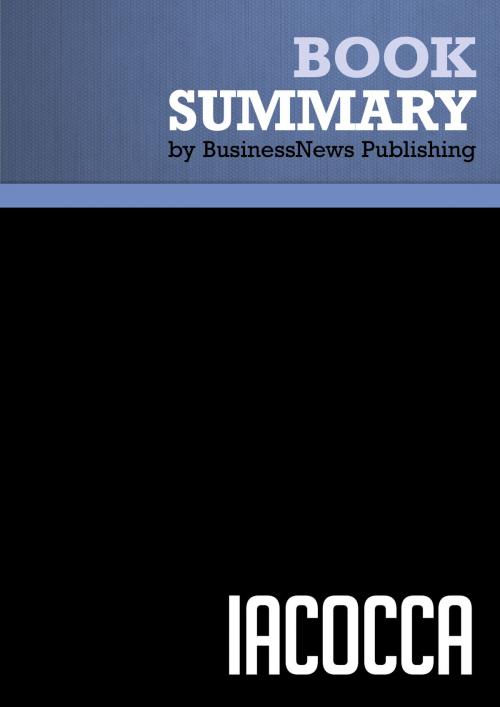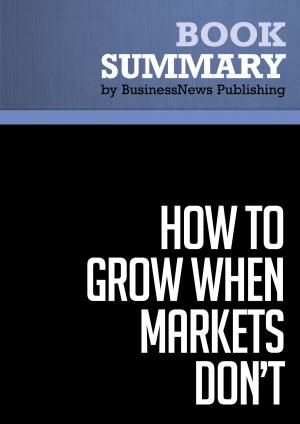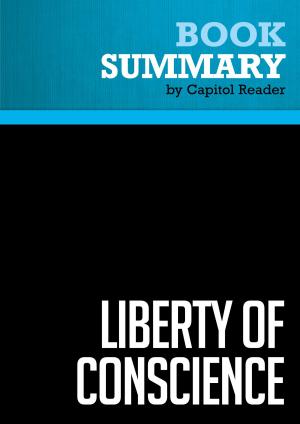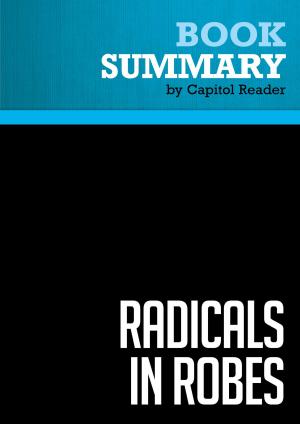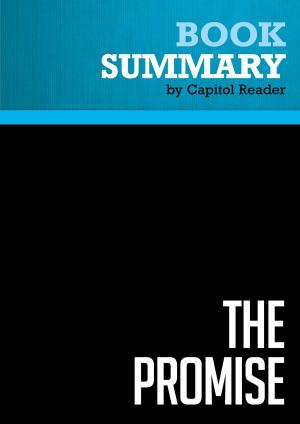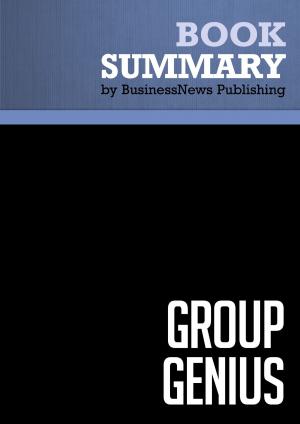Summary: IACOCCA - Lee Iacocca with William Novak
Business & Finance, Economics, Development & Growth, Management & Leadership, Management| Author: | BusinessNews Publishing | ISBN: | 9782806247087 |
| Publisher: | Must Read Summaries | Publication: | February 15, 2013 |
| Imprint: | Business Book Summaries | Language: | English |
| Author: | BusinessNews Publishing |
| ISBN: | 9782806247087 |
| Publisher: | Must Read Summaries |
| Publication: | February 15, 2013 |
| Imprint: | Business Book Summaries |
| Language: | English |
This work offers a summary of the book “IACOCCA: An Autobiography” by Lee Iacocca with William Novak.
At the age of thirty-six, Lee Iacocca was the general manager of the biggest division in the world’s second largest company: Ford Motors. Later in his career, he took the Chrysler, which had 100,000 cars unsold in 1979, and turned it around: by 1983, when it showed a $925 million profit. He attributes his success to simple principles: “I go back to what my parents taught me. Apply yourself. Get all the education you can, but then, by God, do something! Don’t just stand there, make something happen.”
Iacocca and Novak tell a compelling story of how Iacocca dealt with the massive challenges of the motor industry: gas prices, competition from Japanese companies, and personalities –such as Henry Ford – within the business. Crucially, though Iacocca was fired from Ford (despite it having the most successful two years in its history), he decided to take on Chrysler, even though it meant reducing his salary to $1 a year. Iacocca also sets out his financial vision for industry future in the US: he recommends more investment in students who want to go into technology investment in the national transport infrastructure, and encouraging greener energy. Lee Iacocca is a fascinating success story.
At the age of thirty-six, Lee Iacocca was the general manager of the biggest division in the world’s second largest company: Ford Motors. Later in his career, he took the Chrysler, which had 100,000 cars unsold in 1979, and turned it around: by 1983, when it showed a $925 million profit. He attributes his success to simple principles: “I go back to what my parents taught me. Apply yourself. Get all the education you can, but then, by God, do something! Don’t just stand there, make something happen.”
Iacocca and Novak tell a compelling story of how Iacocca dealt with the massive challenges of the motor industry: gas prices, competition from Japanese companies, and personalities –such as Henry Ford – within the business. Crucially, though Iacocca was fired from Ford (despite it having the most successful two years in its history), he decided to take on Chrysler, even though it meant reducing his salary to $1 a year. Iacocca also sets out his financial vision for industry future in the US: he recommends more investment in students who want to go into technology investment in the national transport infrastructure, and encouraging greener energy. Lee Iacocca is a fascinating success story.
This work offers a summary of the book “IACOCCA: An Autobiography” by Lee Iacocca with William Novak.
At the age of thirty-six, Lee Iacocca was the general manager of the biggest division in the world’s second largest company: Ford Motors. Later in his career, he took the Chrysler, which had 100,000 cars unsold in 1979, and turned it around: by 1983, when it showed a $925 million profit. He attributes his success to simple principles: “I go back to what my parents taught me. Apply yourself. Get all the education you can, but then, by God, do something! Don’t just stand there, make something happen.”
Iacocca and Novak tell a compelling story of how Iacocca dealt with the massive challenges of the motor industry: gas prices, competition from Japanese companies, and personalities –such as Henry Ford – within the business. Crucially, though Iacocca was fired from Ford (despite it having the most successful two years in its history), he decided to take on Chrysler, even though it meant reducing his salary to $1 a year. Iacocca also sets out his financial vision for industry future in the US: he recommends more investment in students who want to go into technology investment in the national transport infrastructure, and encouraging greener energy. Lee Iacocca is a fascinating success story.
At the age of thirty-six, Lee Iacocca was the general manager of the biggest division in the world’s second largest company: Ford Motors. Later in his career, he took the Chrysler, which had 100,000 cars unsold in 1979, and turned it around: by 1983, when it showed a $925 million profit. He attributes his success to simple principles: “I go back to what my parents taught me. Apply yourself. Get all the education you can, but then, by God, do something! Don’t just stand there, make something happen.”
Iacocca and Novak tell a compelling story of how Iacocca dealt with the massive challenges of the motor industry: gas prices, competition from Japanese companies, and personalities –such as Henry Ford – within the business. Crucially, though Iacocca was fired from Ford (despite it having the most successful two years in its history), he decided to take on Chrysler, even though it meant reducing his salary to $1 a year. Iacocca also sets out his financial vision for industry future in the US: he recommends more investment in students who want to go into technology investment in the national transport infrastructure, and encouraging greener energy. Lee Iacocca is a fascinating success story.
